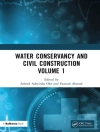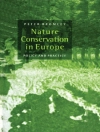The Water Science and Technology Board and the Board on Environmental Studies and Toxicology have released the seventh and final report of the Committee on Restoration of the Greater Everglades Ecosystem, which provides consensus advice to the South Florida Ecosystem Restoration Task Force on various scientific and technical topics. Human settlements and flood-control structures have significantly reduced the Everglades, which once encompassed over three million acres of slow-moving water enriched by a diverse biota. To remedy the degradation of the Everglades, a comprehensive Everglades Restoration Plan was formulated in 1999 with the goal of restoring the original hydrologic conditions of its remaining natural ecosystem. A major feature of this plan is providing enough storage capacity to meet human needs while also providing the needs of the greater Everglades ecosystem. This report reviews and evaluates not only storage options included in the Restoration Plan but also other options not considered in the Plan. Along with providing hydrologic and ecological analyses of the size, location and functioning of water storage components, the report also discusses and makes recommendations on related critical factors, such as timing of land acquisition, intermediate states of restoration, and tradeoffs among competing goals and ecosystem objectives.
Board on Environmental Studies and Toxicology & Committee on Restoration of the Greater Everglades Ecosystem
Re-Engineering Water Storage in the Everglades [EPUB ebook]
Risks and Opportunities
Re-Engineering Water Storage in the Everglades [EPUB ebook]
Risks and Opportunities
购买此电子书可免费获赠一本!
语言 英语 ● 格式 EPUB ● 网页 140 ● ISBN 9780309181501 ● 出版者 National Academies Press ● 发布时间 2005 ● 下载 3 时 ● 货币 EUR ● ID 7143148 ● 复制保护 Adobe DRM
需要具备DRM功能的电子书阅读器












